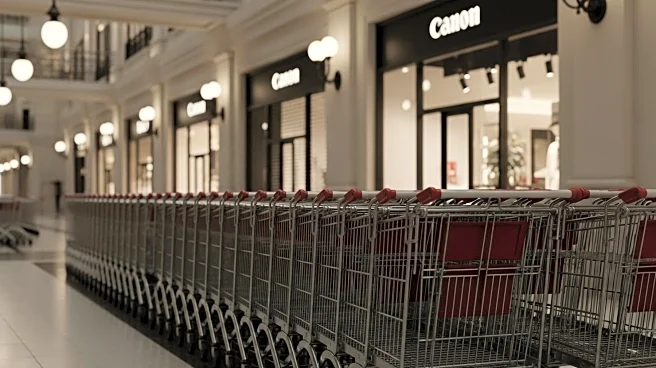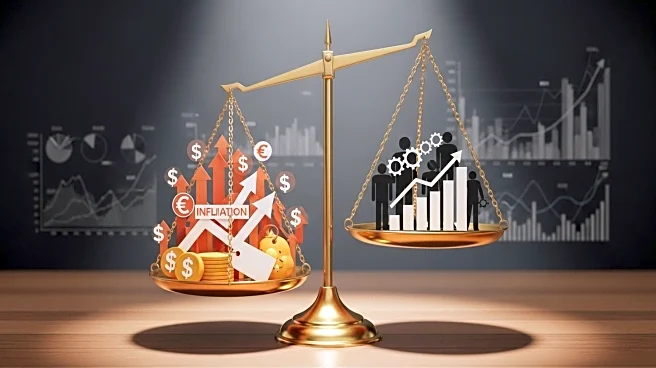What's Happening?
Retail hiring during the seasonal holiday period is projected to fall to its lowest point since 2009, according to a report from Challenger, Gray & Christmas. The report indicates that retailers may hire fewer than 500,000 positions in the last three months of the year, marking the smallest seasonal gain in 16 years. This decline in hiring is attributed to a combination of factors, including tariffs, inflationary pressures, and increased reliance on automation and permanent staff. While some retailers have announced hiring plans, others remain silent, reflecting cautious optimism about holiday sales.
Why It's Important?
The anticipated decline in seasonal hiring has significant implications for the retail industry and the broader economy. Retailers are facing macroeconomic pressures that impact their hiring decisions, potentially affecting consumer spending and economic growth. The reliance on automation and permanent staff suggests a shift in hiring strategies, which could lead to long-term changes in the retail workforce. This development is crucial for stakeholders, including retailers, consumers, and policymakers, as it highlights the need for adaptive strategies in response to economic challenges.
What's Next?
Retailers may adjust their hiring strategies based on holiday sales performance, with the possibility of a late hiring push if sales exceed expectations. Companies are likely to focus on maximizing efficiency with existing staff, offering more hours to current employees during the holiday period. The industry will continue to monitor economic indicators and global trade policies that influence hiring decisions.
Beyond the Headlines
The shift towards automation and permanent staff in retail hiring reflects broader trends in the industry, including technological advancements and changing consumer preferences. This transition may lead to long-term changes in the retail workforce, impacting job opportunities and skill requirements. The industry must navigate these changes while addressing economic pressures and consumer demands.











